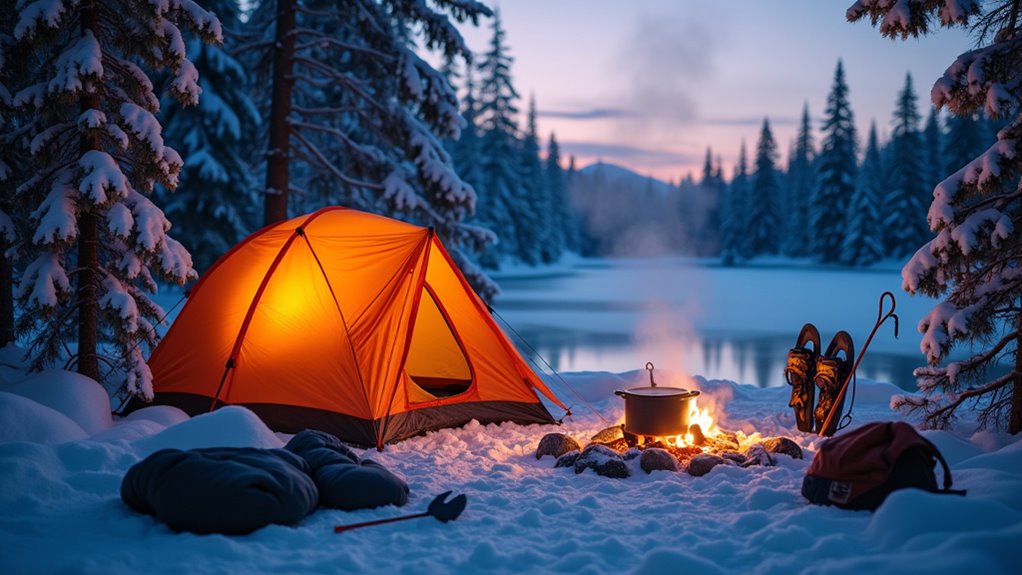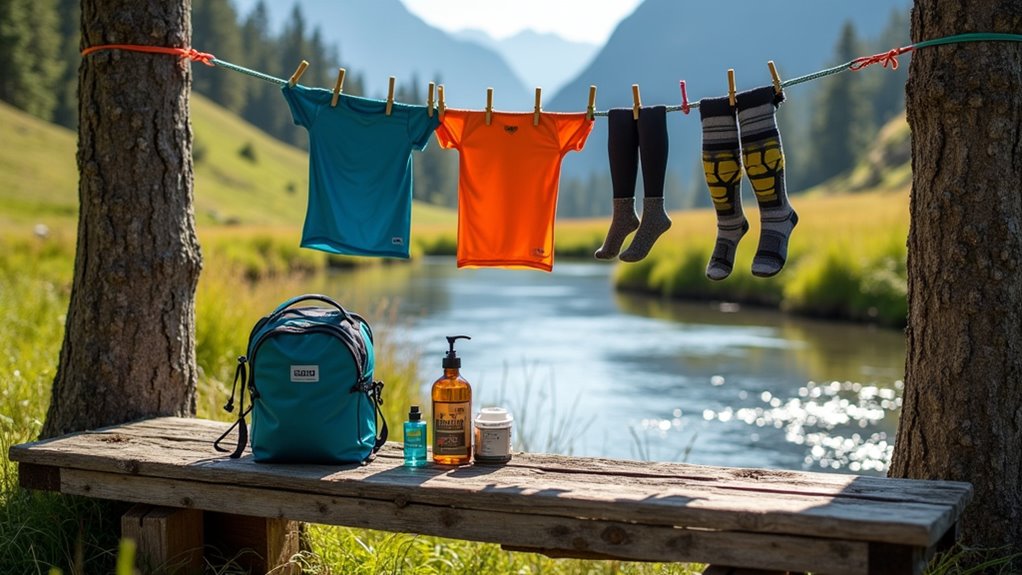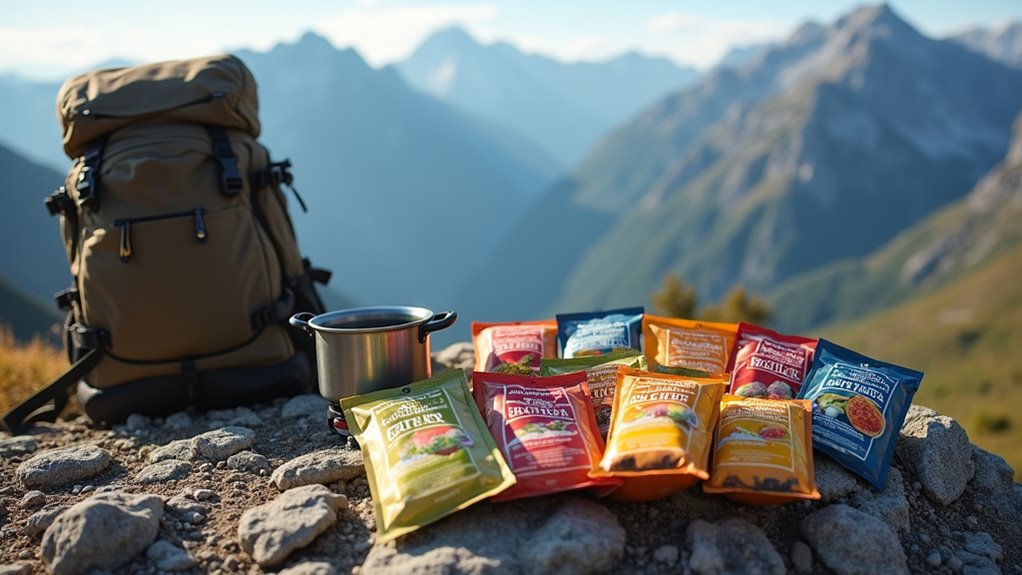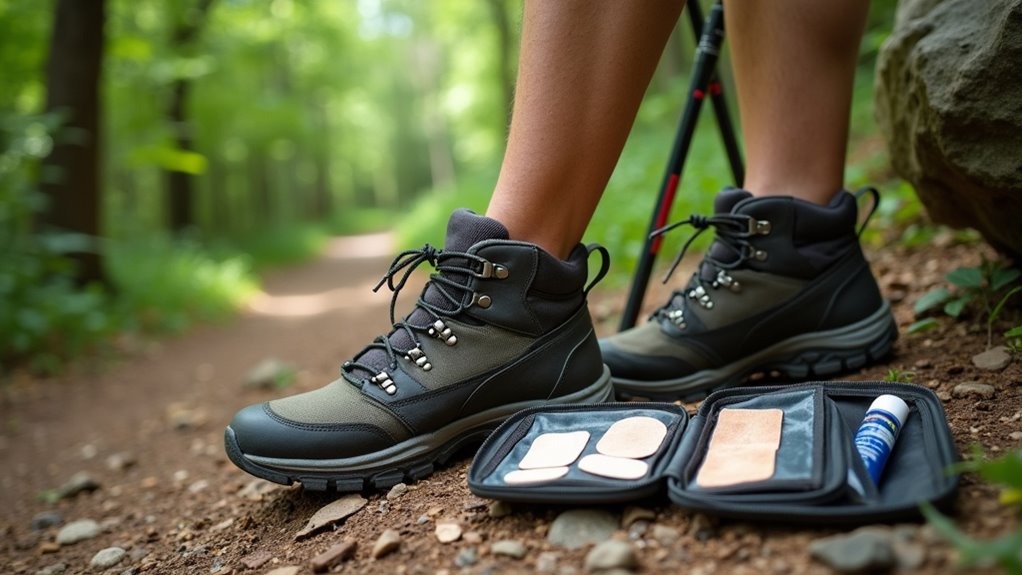To camp safely and comfortably in winter, choose level ground away from avalanche zones, setting up a four-season tent with secure staking and snow-shedding features. Dress in moisture-wicking layers with insulated boots, hats, and gloves, and use a sleeping bag rated for cold temperatures atop a foam pad. Always cook outside, monitor weather updates, and carry emergency gear. Clear snow from your tent regularly to prevent collapse. Following these tips guarantees you’re prepared for harsher conditions, with more helpful strategies just ahead.
Although winter camping requires careful preparation and specialized gear, it offers unique opportunities for solitude and exploration in cold-weather environments. When you choose a campsite, always check local camping regulations and secure any required permits. Avoid setting up on ridge tops or open areas where strong winds can threaten your safety and comfort. Select locations away from avalanche-prone slopes, and prioritize sites near lakes or streams to simplify water access. Look for level ground to guarantee your tent remains stable and comfortable throughout your stay. Check the weather before heading out to ensure you are prepared for any sudden changes in conditions. Assess the snow conditions at your intended campsite, since deep or unstable snow can affect both your safety and the quality of your shelter.
Careful site selection is crucial for winter camping—avoid wind-exposed ridges and avalanche zones, and choose level ground near water for safety and comfort.
For shelter, use a sturdy four-season tent equipped with a rainfly and a snow-shedding roof. Bring extra poles and pole splints in case of accidental breakage, since winter conditions can stress tent frames. Lay down a ground sheet, like a space blanket, to protect the tent floor from ice, and stake your tent securely—especially if wind is a concern. Maintain proper ventilation at all times to prevent moisture buildup, which can lead to frost inside the tent.
Staying warm requires strategic planning. Dress in layers, allowing you to adjust insulation based on activity. Use an insulated sleeping bag rated for the lowest expected temperatures, and sleep atop a closed-cell foam pad to insulate yourself from the frozen ground. Hanging a frost liner inside your tent helps control condensation. Prepare and eat hot meals to maintain energy and core temperature.
Prioritize safety by regularly checking weather updates, watching for hazardous tree branches—often called “widow makers”—that could fall, and never cooking inside your tent due to carbon monoxide risks. Practice safe campfire protocols and carry an emergency kit stocked with essential supplies.
Manage snow and ice by using a whisk broom to brush snow off your clothes before entering the tent, and clear accumulated snow or ice from the tent structure to prevent collapse. Secure staking with “dead men” anchors if the ground is too frozen for standard stakes. Protect your gear with waterproof covers, and bring avalanche gear if your route crosses risky terrain.
Wear insulated waterproof boots, gloves, and hats to prevent heat loss. Carry emergency signaling devices, use heaters and stoves correctly, and always include a thorough first aid kit for unexpected events.









